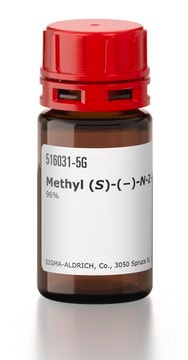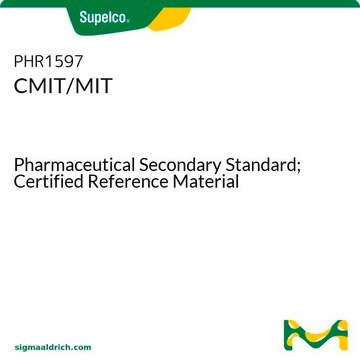540978
2,2-Dibromo-2-cyanoacetamide
96%
Synonyme(s) :
Dibromocyano acetic acid amide
Sélectionner une taille de conditionnement
52,30 $
Sélectionner une taille de conditionnement
About This Item
52,30 $
Produits recommandés
Niveau de qualité
Essai
96%
Pf
122-125 °C (lit.)
Groupe fonctionnel
amide
bromo
nitrile
Chaîne SMILES
NC(=O)C(Br)(Br)C#N
InChI
1S/C3H2Br2N2O/c4-3(5,1-6)2(7)8/h(H2,7,8)
Clé InChI
UUIVKBHZENILKB-UHFFFAOYSA-N
Catégories apparentées
Description générale
Mention d'avertissement
Danger
Mentions de danger
Conseils de prudence
Classification des risques
Acute Tox. 2 Inhalation - Acute Tox. 3 Oral - Aquatic Acute 1 - Aquatic Chronic 1 - Eye Dam. 1 - Skin Irrit. 2 - Skin Sens. 1 - STOT RE 1 Inhalation
Organes cibles
Respiratory Tract
Code de la classe de stockage
6.1A - Combustible acute toxic Cat. 1 and 2 / very toxic hazardous materials
Classe de danger pour l'eau (WGK)
WGK 3
Point d'éclair (°F)
Not applicable
Point d'éclair (°C)
Not applicable
Équipement de protection individuelle
Eyeshields, Faceshields, Gloves, type P3 (EN 143) respirator cartridges
Faites votre choix parmi les versions les plus récentes :
Certificats d'analyse (COA)
Vous ne trouvez pas la bonne version ?
Si vous avez besoin d'une version particulière, vous pouvez rechercher un certificat spécifique par le numéro de lot.
Déjà en possession de ce produit ?
Retrouvez la documentation relative aux produits que vous avez récemment achetés dans la Bibliothèque de documents.
Les clients ont également consulté
Active Filters
Notre équipe de scientifiques dispose d'une expérience dans tous les secteurs de la recherche, notamment en sciences de la vie, science des matériaux, synthèse chimique, chromatographie, analyse et dans de nombreux autres domaines..
Contacter notre Service technique
















